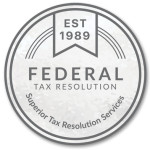IRS DISPELS FIVE MYTHS ABOUT TAX REFUNDS
May 14, 2019 - Douglas Myser
IRS dispels five myths about tax refunds. As tax time comes and goes, the Internal Revenue Service understands that taxpayers are anxious to get details about their tax refunds. This had led to a number of common myths about refunds that often circulate on social media. While there's no secret way for taxpayers to find out when their refund will be issued, there are some key facts that can help people understand the process. Taxpayers should keep in mind the IRS issues nine out of 10 tax refunds in less than 21 days. And the easiest way to check on a refund is "Where's my refund?" an online tool available on IRS.GOV and through IRS2GO app. IRS dispels five myths about tax refunds.
People can use "Where's My Refund?' to check on the status of their tax refund within 24 hours after the IRS receives an e-filed return or four weeks after a mailed paper return. The "Where's My Refund?" tool is updated no more than once every 24 hours, usually overnight, so there's no need to check the status more often. Taxpayers should only call the IRS tax help hotline to talk to an IRS representative if it has been: 21 days since their tax return was filed, six weeks or more since their returns was mailed, or when "Where's my Refund?" tells the taxpayer to contact the IRS.
Myth one, calling the IRS or a tax professional will provide a better refund date. This just doesn't work. Calling either the IRS or a tax professional will not help get a better date. Myth two, ordering a tax transcript is a secret way to get a refund date. No is will not provide that information. Myth three, "Where's My Refund must be wrong. No it is not wrong. Myth number four, "Where's My Refund?" must be wrong, because the refund amount is small er than what I thought. Many things could cause that to happen, and most likely its a mistake you made on filing your tax return.
If instead of a refund, you owe the IRS back taxes, you can pursue Tax Relief by contacting this 35 year old Tax Resolution Services firm and asking about options to file your back taxes and any options you may qualify for to see if you can reduce your debt, including the IRS Fresh Start Program.
